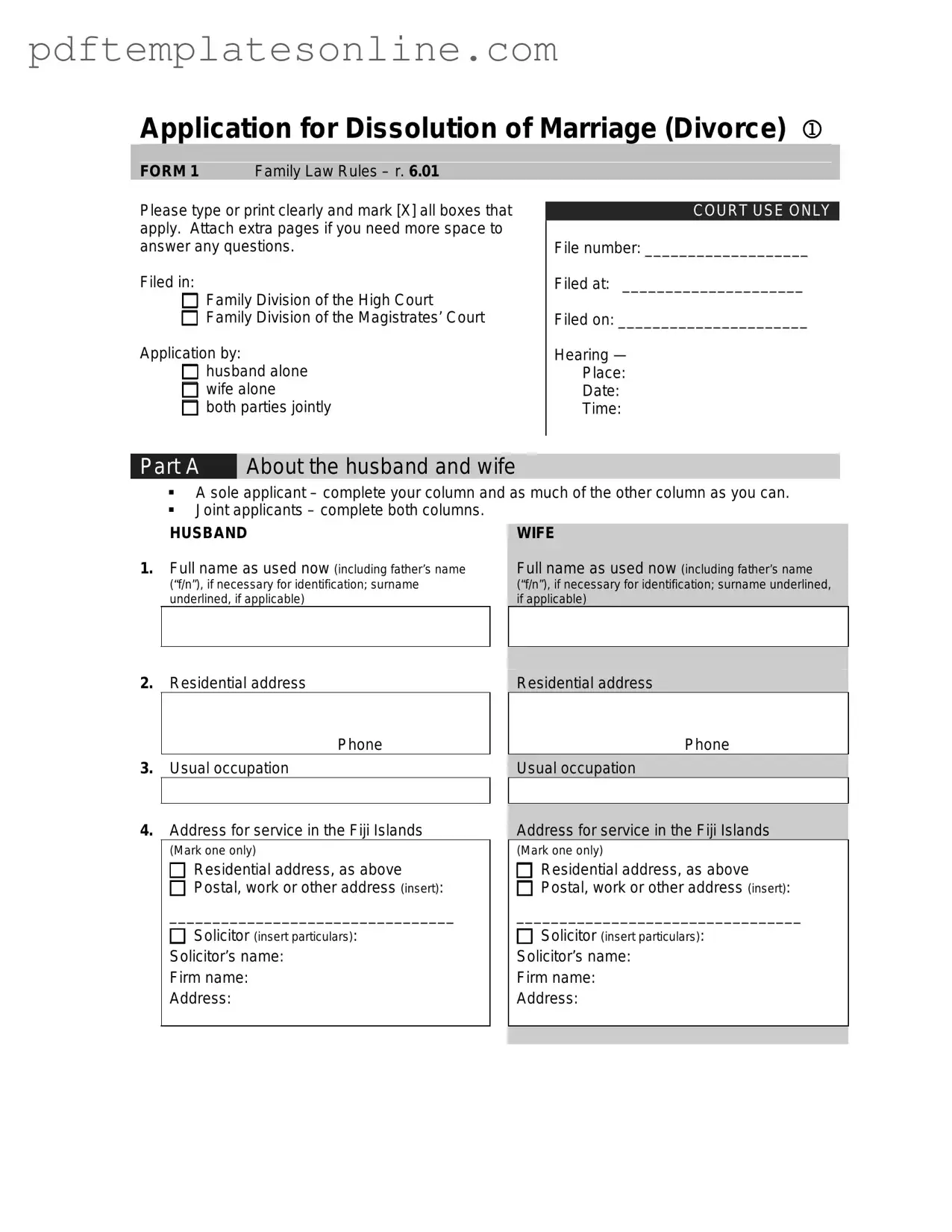Blank Application For Divorce Form
The Application for Divorce form is a legal document that initiates the divorce process in a court. It outlines the reasons for the divorce and the details of the marriage, including information about children and property. Completing this form accurately is essential for a smooth legal proceeding.
Access Application For Divorce Editor Now
